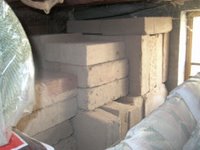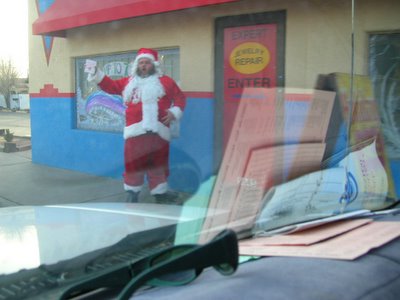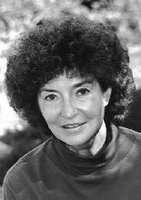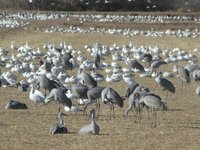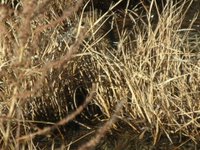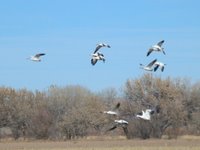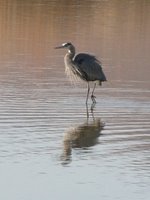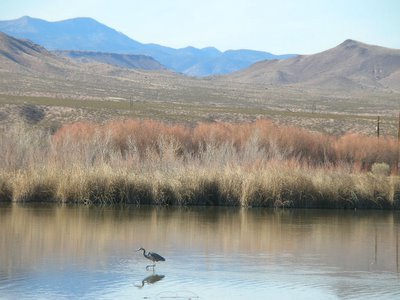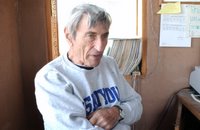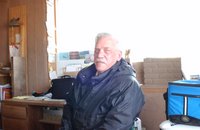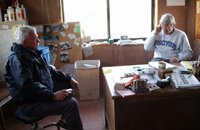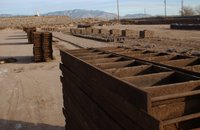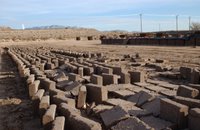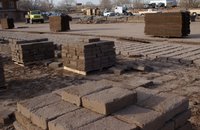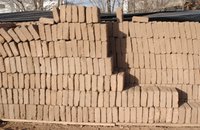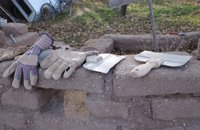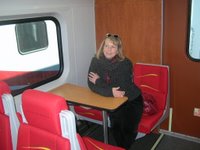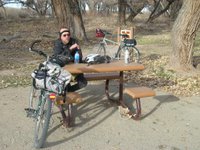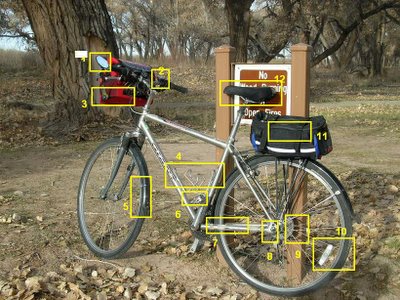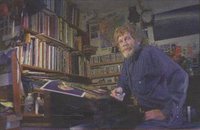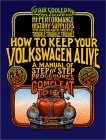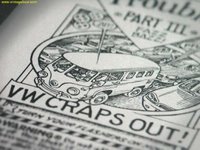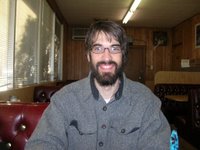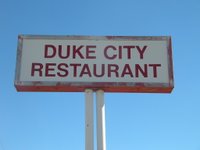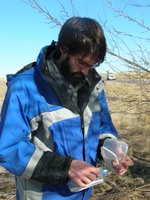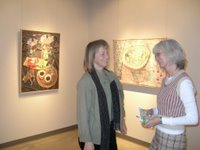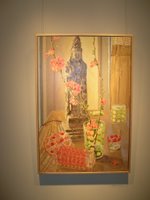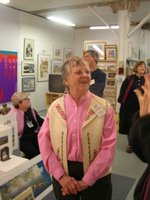So we stopped in Socorro for MaryAnn's beverage de rigeur, coffee. I have bad
 news here. Our favorite coffee stop is closed. Martha's Black Dog on Manzanares St. is shuttered. Dammit. According to a patron at El Camino, "Bottom line is that the bottom line wasn't big enough."
news here. Our favorite coffee stop is closed. Martha's Black Dog on Manzanares St. is shuttered. Dammit. According to a patron at El Camino, "Bottom line is that the bottom line wasn't big enough."Well, we soldiered onward to Truth or Consequences. I had it in my mind to stop at one of those funky hot springs hotels. We just didn't want to spend a lot of money. We actually stopped at the first one we found: Marshall Hot Springs. It cost us $60 for unlimited soaks in their "free-flowing gravel bottom" pools and "the most unusual room in town." I guess it was called that because a stream ran under and through the room. It looked lik
 e someone had enclosed a deck...and enclosed it none too well I might add. But it was fantastic. After two soaks, we slept over 12 hours.
e someone had enclosed a deck...and enclosed it none too well I might add. But it was fantastic. After two soaks, we slept over 12 hours.The next day we visited Fort Selden, just north of Las Cruces. The layers of history in this state are visible everywhere. The fort was built on top of part of an old Mimbres village, a village that runs all of 5 miles to the north. Mimbreno potsher
 ds can be found in the mortar joints of the adobe walls of the fort, sticking out from the eroding structures. These walls won't last forever, a monument ranger said they would be gone in the next 70 years. So if you need a goal in life, sometime before 2075 visit Fort Selden. Btw, Douglas MacArthur lived here as a young boy. There is a picture of him wearing a "Little Lord Fauntleroy" outfit. I couldn't find that photo on the web.
ds can be found in the mortar joints of the adobe walls of the fort, sticking out from the eroding structures. These walls won't last forever, a monument ranger said they would be gone in the next 70 years. So if you need a goal in life, sometime before 2075 visit Fort Selden. Btw, Douglas MacArthur lived here as a young boy. There is a picture of him wearing a "Little Lord Fauntleroy" outfit. I couldn't find that photo on the web.Las Cruces had s
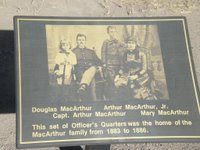 o much traffic I couldn't stand driving in it. We ate lunch at a place called Escondido or E2...both names were used...on the corner of Wyatt and El Paseo. HUGE portions of good New Mexican food. And cheap.
o much traffic I couldn't stand driving in it. We ate lunch at a place called Escondido or E2...both names were used...on the corner of Wyatt and El Paseo. HUGE portions of good New Mexican food. And cheap.We got to El Paso by late afternoon. We had stopped at the visitor's center at the Texas border and had picked up a book with coupons in it. One of them was a $39 coupon at the Ramada Suites. So we went there. There was a fine print catch to everything, however. It was not good during "special events." Well, it is Sun Bowl weekend. Sigh... So it cost us about 60 bucks. But it is a suite...with a kitchenette...wi-fi. Hard to complain about that.
Today we are going to Juarez. More later.

